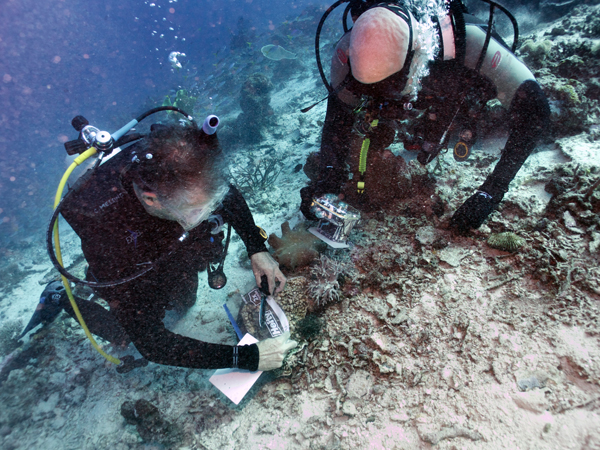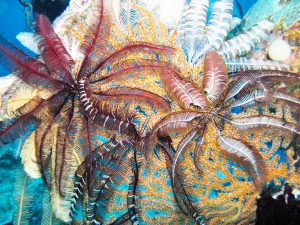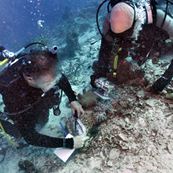
Charles Messing, Ph.D. doctoral student Kristian Taylor recently returned from a five-week research expedition to investigate the echinoderm fauna of Raja Ampat, Indonesia, in the heart of the Coral Triangle. This is the region with the highest marine biodiversity on earth.
The expedition focused on the feather stars (Crinoidea), Messing’s specialty, as well as sea cucumbers and other echinoderms. The research team also included Gregory Rouse, Ph.D. and doctoral student Mindi Summers (Scripps Institute of Oceanography), doctoral student Allison Miller (University of Guam), professor Simon Leatemia and student Rico Mailissa (University of West Papua) and Inayat Al Hakim and Indra Vimono (LIPI—Indonesian Institute of Sciences).
The team collected over 40 crinoid species, including at least one likely new species. For comparison, the entire shallow western Atlantic – from the Carolinas to Brazil – supports only nine species. The expedition was funded as part of the collaborative NSF grant: Assembling the Echinoderm Tree of Life. Messing said that he found several varieties that he had never seen before, as well as color patterns that would not be out of place in a “Barnum and Bailey” circus clown car.


